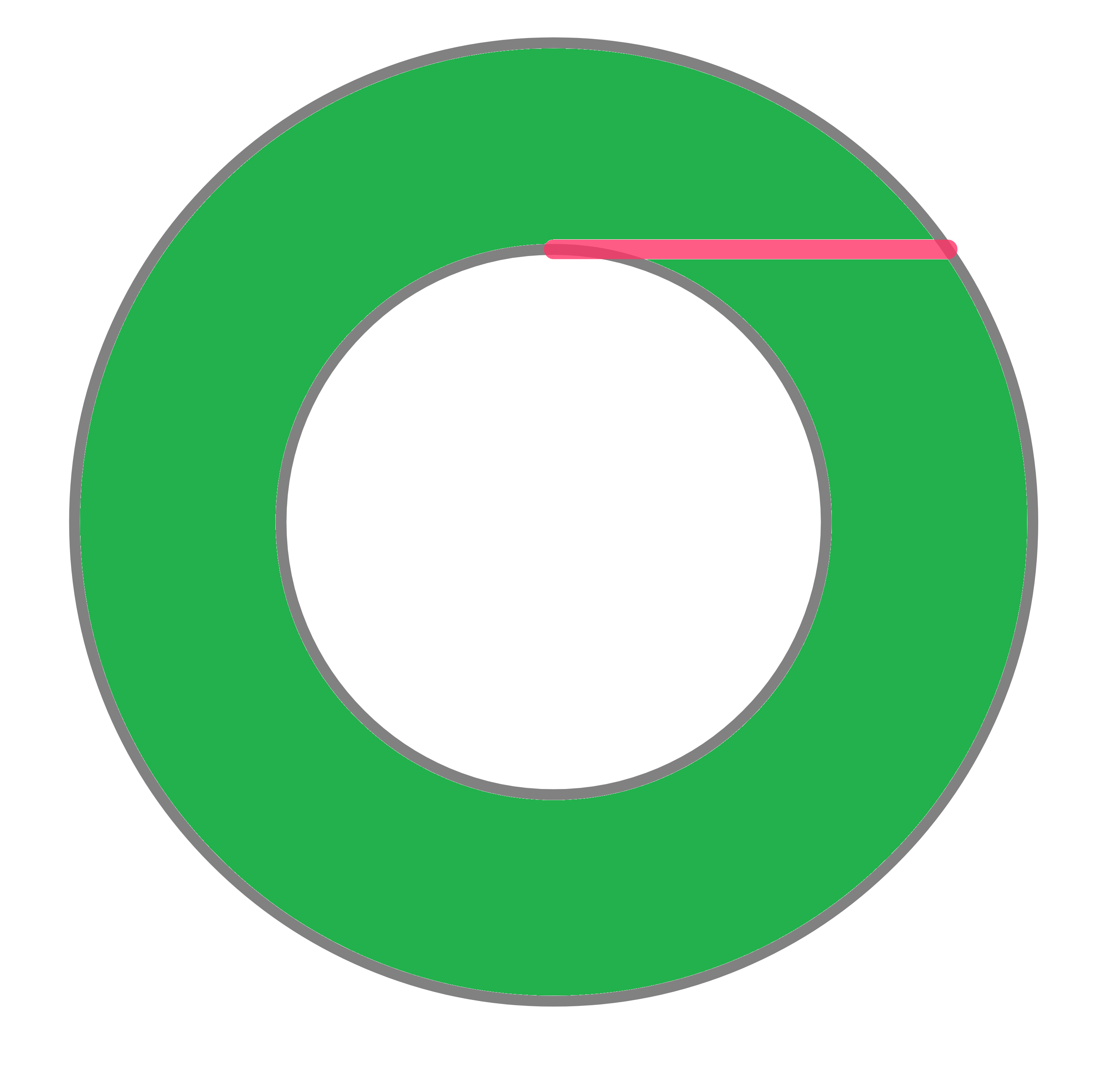Problems
A maths teacher draws a number of circles on a piece of paper. When she shows this piece of paper to the young mathematician, he claims he can see only five circles. The maths teacher agrees. But when she shows the same piece of paper to another young mathematician, he says that there are exactly eight circles. The teacher confirms that this answer is also correct. How is that possible and how many circles did she originally draw on that piece of paper?
The marked pink segment (tangent to the inner circle) has length \(1\). Find the area of the green annulus.

There are 25 points on a plane, and among any three of them there can be found two points with a distance between them of less than 1. Prove that there is a circle of radius 1 containing at least 13 of these points.
Several chords are drawn through a unit circle. Prove that if each diameter intersects with no more than \(k\) chords, then the total length of all the chords is less than \(\pi k\).
Several circles, whose total length of circumferences is 10, are placed inside a square of side 1. Prove that there will always be some straight line that crosses at least four of the circles.
On a circle of radius 1, the point \(O\) is marked and from this point, to the right, a notch is marked using a compass of radius \(l\). From the obtained notch \(O_1\), a new notch is marked, in the same direction with the same radius and this is process is repeated 1968 times. After this, the circle is cut at all 1968 notches, and we get 1968 arcs. How many different lengths of arcs can this result in?
In a regular polygon with \(25\) vertices, all the diagonals are drawn.
Prove that there are no nine diagonals passing through one interior point of the shape.
A circle is divided up by the points \(A, B, C, D\) so that \({\smile}{AB}:{\smile}{BC}:{\smile}{CD}:{\smile}{DA} = 2: 3: 5: 6\). The chords \(AC\) and \(BD\) intersect at point \(M\). Find the angle \(AMB\).
A circle is divided up by the points \(A\), \(B\), \(C\), \(D\) so that \({\smile}{AB}:{\smile}{BC}:{\smile}{CD}:{\smile}{DA} = 3: 2: 13: 7\). The chords \(AD\) and \(BC\) are continued until their intersection at point \(M\). Find the angle \(AMB\).
The bisector of the outer corner at the vertex \(C\) of the triangle \(ABC\) intersects the circumscribed circle at the point \(D\). Prove that \(AD = BD\).